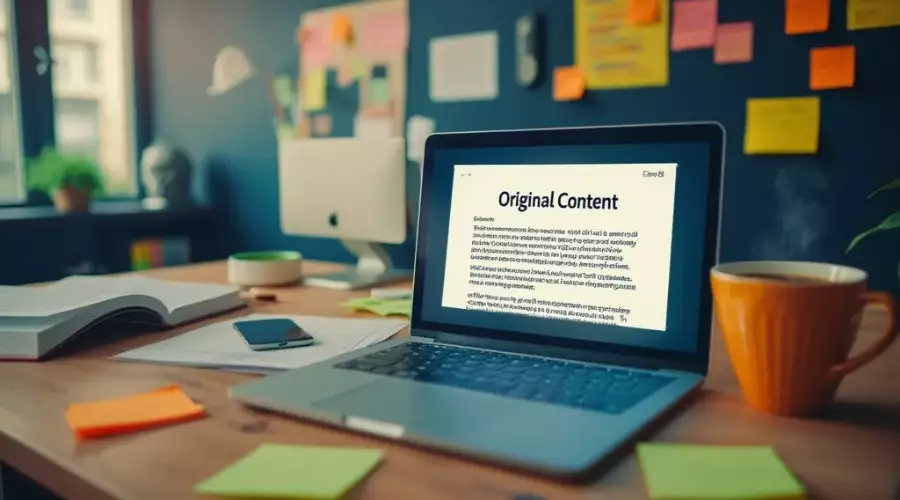Avoiding Plagiarism in Email Marketing: Tools and Tips for Clean Copy

If you've ever written an email marketing campaign, you know that it takes time and creativity to get it just right.
However, there's one thing that can completely derail your efforts: plagiarism. While it may seem like a minor issue, plagiarizing content or even accidentally copying someone else's work can have serious consequences.
So, how do you make sure your email campaigns are original, engaging, and legally acceptable?
Let's find out.
What is Plagiarism in Email Marketing?
Before we get to the how-tos, let's review what plagiarism really means in the context of email marketing.
In simple terms, it can look like copying someone else's subject lines, body copy, or even entire email templates. It doesn't matter if you're copying a sentence or an entire email because even a few plagiarized lines can hurt your credibility and lead to some serious issues.
Therefore, you need to perform a plagiarism check for every email you send to be on the safe side. Keep in mind that it's not just about text. Images, infographics, and design elements can be plagiarized, too.
Why You Should Care About Plagiarism?
You might be thinking, "It's just an email, what's the big deal?”
Well, there are a few good reasons why you should always avoid plagiarism in your email marketing campaigns:
1) Your brand's reputation is on the line
If your subscribers notice that your emails sound too much like someone else's, they will start to question your authenticity. In a world where consumers seek original and personalized content, copying someone else's work is a big red flag.
2) It can mess with your SEO
Email marketing may not directly affect your website's SEO, but consider this: you're probably including links to your website, various blog posts, or landing pages in those emails. If your content is plagiarized, Google can penalize you for duplicate content, which can hurt your visibility and rankings.
3) Legal trouble
It's not just about looking bad - it can be illegal. Copyright infringement can result in fines, legal fees, and a whole lot of unnecessary hassle. The last thing you want is to get into a dispute over content you didn't properly license or attribute.
4) Missed engagement opportunities
Plagiarized content can feel outdated and uninspired. If your audience senses that your emails are just rephrased material from elsewhere, they won't engage. Without engagement, you're missing out on conversions and connections.
How to Keep Your Copy Clean?
Here are a few ways to make your email marketing campaigns fresh and original:
Create authentic content
While it's tempting to rely on templates or "borrow” someone else's ideas, creating original copy is always worth the extra effort.
To make your content stand out, craft emails that speak directly to the demands, challenges, and interests of your target audience. Personalization goes a long way.
Find your brand voice and make sure that every email you send represents that. Stay true to your unique tone and style. Don't forget to include your own unique perspective or solutions in your email campaigns.
Give credit where credit is due
Whether you are quoting an article or using a statistic from a study, acknowledge the source. You can quote it directly or provide links to the original source.
If you're using someone else's visuals, make sure that you have the proper rights to do so. Many websites offer royalty-free images, or you can subscribe to stock image services like Shutterstock or Unsplash.
Use plagiarism detection tools
There are plenty of tools that can help you spot any accidental plagiarism before hitting "Send” on your email campaign.
For instance, Copyscape scans the web for duplicate content and gives you a list of potential matches. Grammarly can quickly identify copied content, while Quetext is a simple tool perfect for scanning your email copy.
Get creative with paraphrasing
Paraphrasing should involve rethinking the entire idea and putting it into your own words. The key is to make it sound like you, not a reworded version of someone's text.
Remember that you need to give credit to the original source even when you are paraphrasing. This way, you are playing fair while creating unique content.
Customize email templates
Using templates can be a huge time-saver, but make sure you're not just using them as is. Many templates are widely available, which is why using them without customization could result in producing general or even recycled content.
Instead, tweak the copy, add your unique spin, and make it feel like something your audience hasn't seen before.
Stay up to date on copyright law
It's worth brushing up on copyright laws so you know what's considered fair and what could get you in legal trouble. If you are unsure about whether you're allowed to use something, don't hesitate to seek legal advice.
Plan ahead with a content calendar
One of the best ways to ensure that your emails stay fresh and original is to plan ahead.
Create a calendar to keep track of your email campaigns, promotions, and key dates. Doing so will help you avoid recycling ideas or accidentally using someone else's content.
Why Bringing Your Own Voice to the Table Matters
One of the best ways to avoid plagiarism—and keep your email campaigns truly original—is to lean into your own perspective.
Sure, there are tons of tips and best practices out there about email marketing, but what really sets you apart from everyone else is your personal take on things.
Your audience is interested in you, your experiences, and the lessons you've learned along the way.
So, instead of just reiterating the same advice everyone else is using, try to inject your own insights, stories, and humor into your emails.
Let's say you're promoting a new product. Instead of pulling a generic description from a press release or using a sales pitch that's been done a thousand times, think about how you would explain the product to a friend.
Share a funny story about how it helped you solve a problem or how it fits into your daily routine. People connect with people, not with marketing jargon.
When you add your own voice and personality, you're not only avoiding plagiarism, you're also creating a meaningful connection that resonates with your target audience.
This personal touch doesn't just apply to the text itself. You can apply it to your visuals, too.
Customize stock images, add personal photos or behind-the-scenes glimpses, and use design elements that reflect your brand's identity. The more you weave in your unique perspective, the less likely your emails will feel like they're borrowed from somewhere else.
Ultimately, originality doesn't just mean avoiding plagiarism—it's about embracing what makes your brand, products, and story different. When you do that, your emails will stand out for all the right reasons.
Wrapping It Up: Keep It Real, Keep It Fresh
Plagiarism might seem like a minor issue in the grand scheme of email marketing, but the risks far outweigh the rewards.
Whether it's damaging your brand's reputation, landing you in legal trouble, or costing you valuable customer engagement, the consequences can be serious.
Focus on creating original content, using plagiarism detection tools, and properly citing external sources to make sure that your email campaigns are authentic and effective. At the end of the day, it's authenticity that audiences crave.



